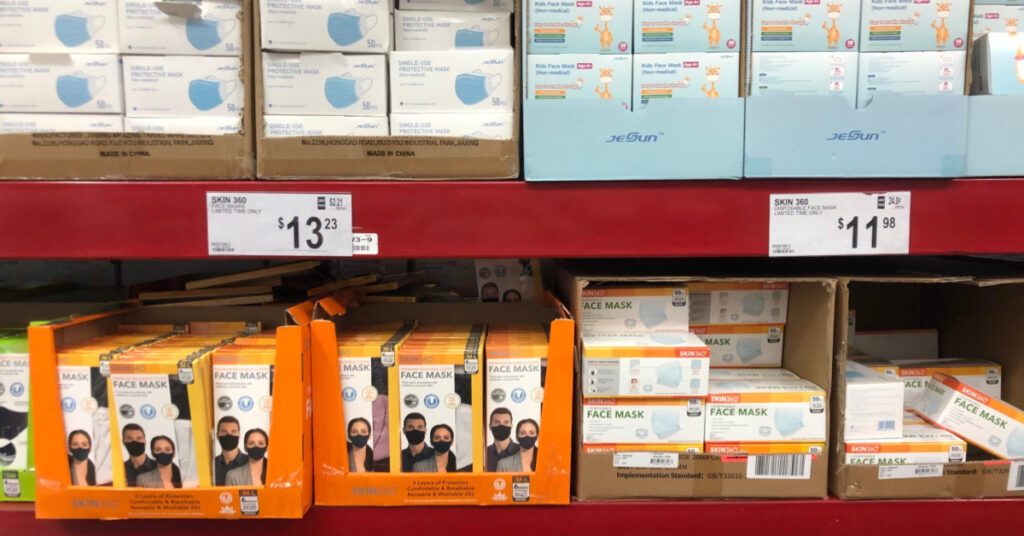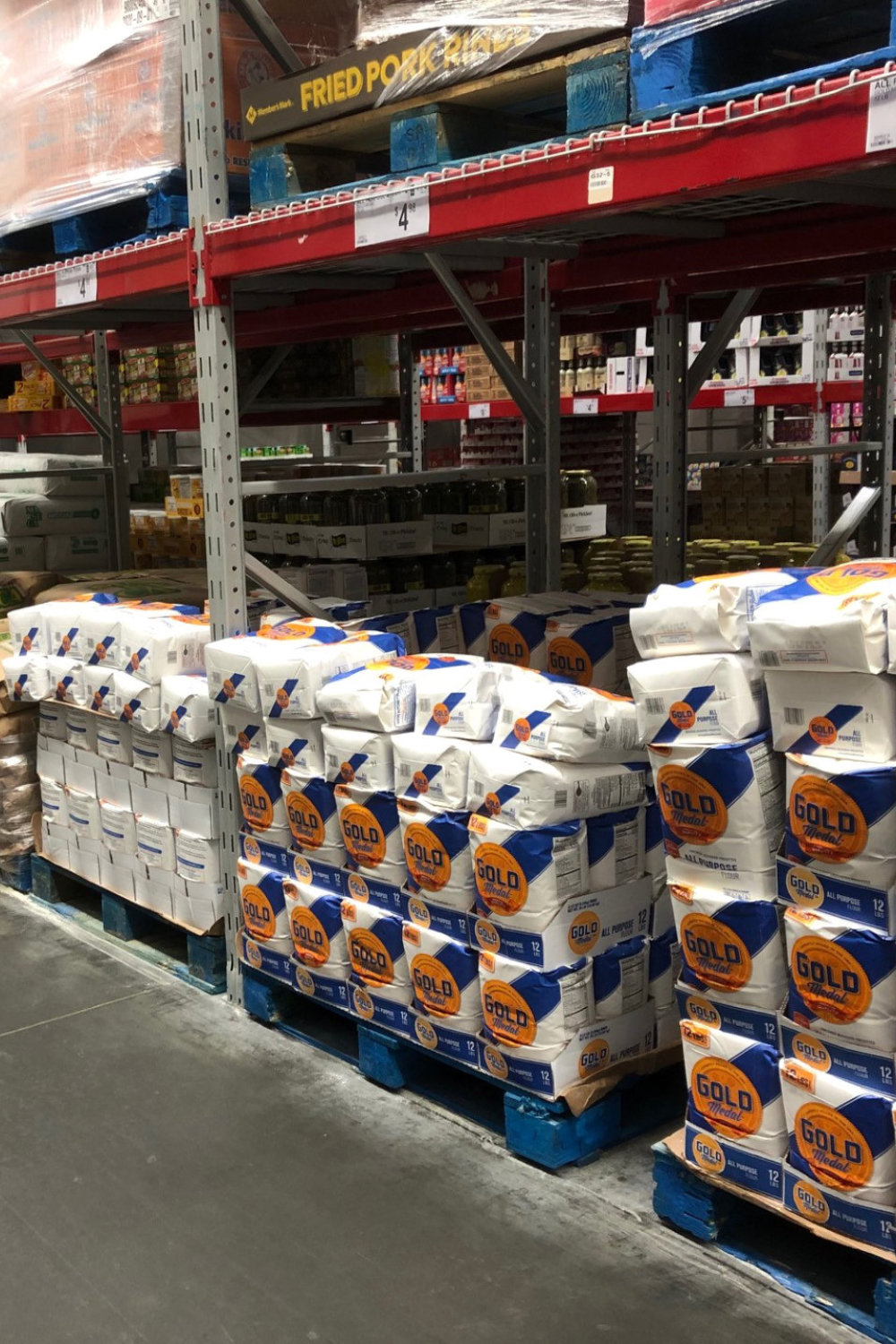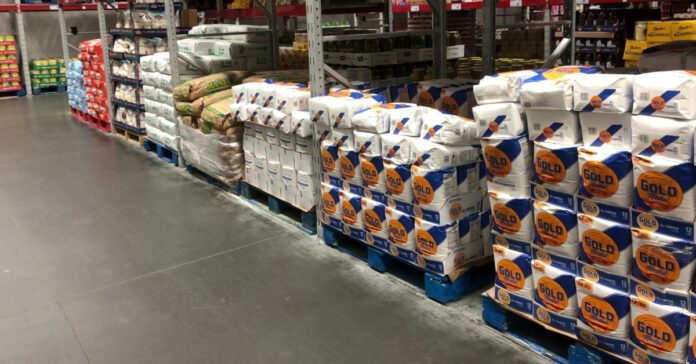This week, I made our monthly run to Sam’s Club and I am happy to report that everything was back in stock, with the exception of thick-cut bacon. The seafood cooler was filled again and the paper products row was stuffed with paper towels and toilet paper.
For the first time, I also saw a large stock of COVID-19 related PPE items, from multiple types of masks and gloves to hand sanitizers. I had noted this at a CVS recently, so I guess it has become quite the trend Looks like there won’t be any shortages in the immediate future.

We Add to Our Prepper Pantry
In addition to buying plenty of groceries for short-term consumption, I added two big jars of peanut butter, a six-pack of canned chicken, and a 10-pack of taco seasoning to our prepping pantry. We find the canned chicken is an excellent choice for prepper food and has a shelf life that far exceeds whatever they stamp on the can. Plus, the Sam’s Club brand has nothing in it except chicken and salt.
This is the easy way to prep: add a few things to your stores every time you shop. Buy a box or two of ammo every paycheck. Buy gear one piece at a time, as the budget allows. Yes, you can spend thousands of dollars on long-term storage food, or you can $50 to $100 a month over a period of years.
By all means, if you have the money, make the investment. If you feel you are way behind the curve when it comes to prepping, spending lots of money is one way to catch up. But if you look at prepping as a journey, then there much to be said about buying on a regular basis for a period of years. You’ll be surprised at how quickly things add up.
Pete’s Three Tiered Food Storage Strategy
Remember that the layered approach to prepping is our key strategy. Start with one layer and over time add more and more layers. With food, we take this approach:
Layer 1: Our prepper pantry
This is canned food, dried food, and other items that can store without refrigeration and can be purchased at a grocery store or warehouse club. Include spices, yeast, flour, salt, sugar and other basics that you would need to prepare your own foods and do some baking. See our 30-day food supply recommendations for an idea where to start.
Layer 1 also includes anything that will go bad quickly, which tends to mean fats like oils. While coconut oil will last a relatively long time, olive oil can start to go rancid in about a year. If you buy butter, store it in the freezer until the power fails or you need to use it.
When you have at least a three month supply of grocery items in your prepper pantry, move on to the next layer, but remember to revisit this one and to rotate the items in your prepper pantry so they do not go bad.
Layer 2: Prepper staples
These are basic ingredients in #10 cans or 5-gallon pails like rice, beans, pasta, wheat, diced potatoes, soup mixes, etc. These should be the less expensive dehydrated foods, not freeze dried items. As you build up your staples, add dehydrated fruits and vegetables. Look for items with at least a 7 to 10-year shelf life.
When you have at least a one-year supply of the staples, go on to the freeze dried foods
Layer 3: Freeze-Dried Prepper Foods.
Commercially freeze dried foods are much more expensive than dehydrated foods, both on a per-serving basis and on a per-calorie basis. They also hold fewer servings per can. However, you can obtain freeze dried meats, and many freeze dried meals are quick and easy to prepare. While the stables might give you the ingredients to bake a casserole, for a freeze dried meal, all you usually have to do is add water.
Layer 4: Extras
I know, I said it was a three-tied strategy, and those tiers are the foundation of your food storage program. For the most effective results, spend your money and build your food preps in that basic order.
But buy extras whenever you want, just start small and don’t overdo it.
What are extras? Things you are addicted to or crave, like coffee, alcohol, chocolate. For my wife during the COVID-19 quarantine, it turned out to be pretzels and corn chips, so I now store pretzels (shh, don’t tell her.) For me, it was crackers and chocolate chip cookies.
I also consider MREs to be extras, mostly because of the expense. If you buy a bunch of protein bars, breakfast bars, or meal replacement bars, I’d lump them into this category as well. They are useful to have but you can live without them.
Using the Layers
If the SHTF and you end up living on your prepping food, you can and should mix up the layers. A fast, filling meal is to cook a pot of rice (from a #10 can or 5-gallon pail in layer 2), open a can of chili (Layer 1), and dump it in there. If you bake bread from ingredients in Layer 2, you might eat it with peanut butter, from Layer 1.
You should also blend locally-sourced foods with your storage food. For example, you can add rabbit or squirrel meat you have shot or trapped to the stew or soup you made from the mix in layer 2. You can eat produce from your garden with items from any level.
Wherever you are on your prepper journey, now would be a good time to step it up. There are predictions of food shortages, of packaging shortages, of supply chain disruptions, of economic collapse and worse. Better stock up while the shelves are still full because we’ve all seen how quickly that can change.









